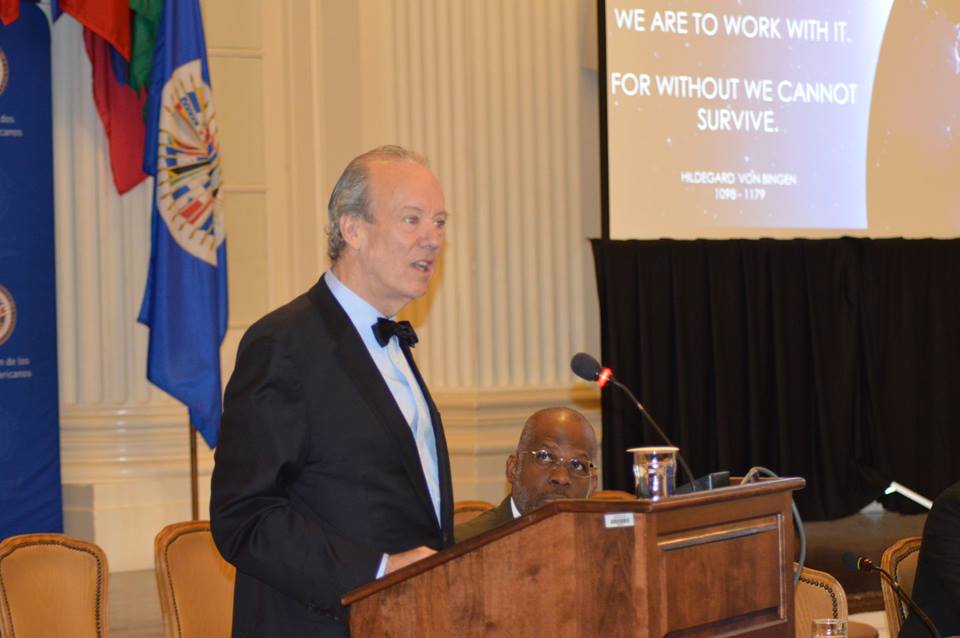

The circular economy concept offers an alternative to today’s linear “take, make, dispose” economic model, moving away from growth through the use of natural resources and ecosystems. This philosophy is eminently compatible with the principles of sustainable development and could inject added value into the intergovernmental negotiation processes for the post-2015 development agenda, both of which concepts are being addressed by the Inter-American Council for Integral Development and at the United Nations.
On May 4, the OAS was honored to receive at its headquarters William McDonough, Time magazine’s “hero of the environment” and co-originator of the circular economy concept. Mr. McDonough was the special guest at the High-Level Dialogue on Transition Toward Circular Economies in the Americas. Together with other experts in this field, as well as international strategic partners, Mister McDonough shared his experience and views regarding the viability and application of this production philosophy. The main aim of the dialogue was to encourage the technical assistance needed to contribute to the evolution of the circular economy concept in member states through the ECPA’s Closed Looped Cycle Production in the Americas program (CLCPA). At present, the OAS is the only multilateral organization that implements initiatives of this nature.
Cletus I. Springer, Director of the OAS Department of Sustainable Development delivered the opening remarks on behalf of the OAS Secretary General, José Miguel Insulza, saying that the closed loop production model –inspired by the “cradle to cradle” design principles– is an innovative practice that underpins the three basic pillars of sustainable development: people, planet, and profit.
For his part, Michael Fitzpatrick, Interim Representative of the United States to the OAS, mentioned that the “United States, in partnership with the international community, is seeking innovative solutions to problems of global significance. And the circular economy offers an effective and logical approach for confronting those shared challenges.”
Mr. McDonough extended an invitation to “celebrate what it means to do good things. To celebrate what it means to be good.” He said that it was “time to stop disposing of things and to commit to our children’s future.” He also urged those present to think more about their legacies than about their work, and to swap value for values.
Neil Parsan, Ambassador and Permanent Representative of Trinidad and Tobago to the OAS, highlighted his country’s efforts with respect to the use of alternative materials to polythene foam, whose disposal is problematic as it is not a recyclable material. Likewise, Mathy Stanislaus of the United States Environmental Protection Agency described the progress of the Sustainable Material Management Program, which espouses the principles of rethinking designs in order to “retake, remake, and re-dispose” and to look upon waste as an opportunity.
The CLCPA is an ECPA initiative that was launched by the OAS Department of Sustainable Development in 2009. The purpose of the program is to introduce and showcase the viability and applicability of design and closed loop manufacturing methodologies in the production sector throughout the Americas, in order to facilitate the transition toward circular economies.
The CLCPA seeks to rationalize the use of materials and natural resources by providing assistance for the development of industrial processes that imitate the earth’s regenerating capacity; it aims to make use of renewable energies and ensure adequate water management; and it gives particular emphasis to carefully and intelligently design goods and services that minimize, keep track of, and gradually eliminate the use of toxic materials and chemical products as well as eradicate the concept of waste. The initiative has three pilot projects in Colombia, Panama, and Trinidad and Tobago.
 View Map
View Map